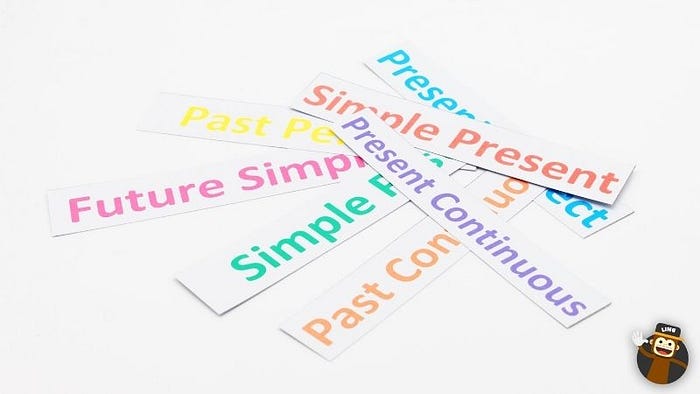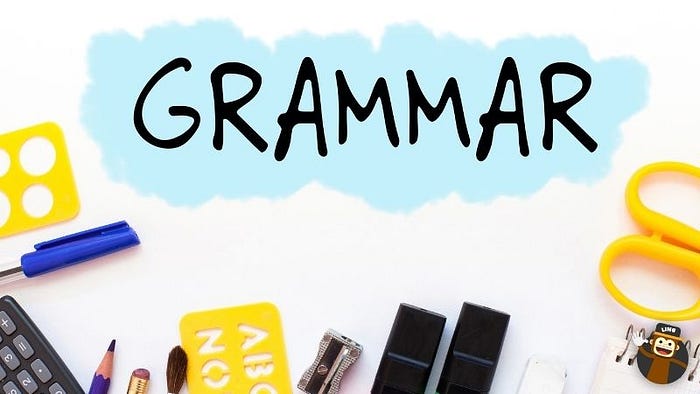#1 Ultimate Guide To Dutch Verb Tenses
Original blog post: https://ling-app.com/nl/dutch-verb-tenses/

Alright, are you ready for a rather in-depth grammar session? Learning verbs in Dutch is not as simple as presenting you with a never-ending list of Dutch verbs.
That wouldn’t help you at all. What’s important is the understanding of Dutch verb conjugation.
Like English, French, and many other languages, Dutch conjugates its verbs. Furthermore, they have formal and informal designations for subjects such as ‘you,’ much like the French do.
There are also rules in Dutch for subject-verb agreement when the subject is in singular form or plural form, which we’ll review with you.
In this article, you’ll learn about Dutch conjugation, irregular and regular verbs using the most commonly used verbs.
We’ll show you how to use Dutch irregular verbs across verb tenses such as present tense, past tense, and perfect tense.
To truly learn the Dutch language requires dedication and patience. However, if you’ve studied English grammar before, this should be a breeze as the rules are similar.
Why Is It Important To Learn Dutch Verb Conjugation?
Well, quite simply, verbs are used in every sentence, so you must know how to conjugate them correctly depending on the verb tense.
Subjects And Pronouns In Dutch

In proper Dutch sentence structure, pronouns replace nouns in a sentence. These affect how a verb is conjugated in Dutch.
Also, there are formal and informal ways to address someone by the pronoun, ‘you.’

Dutch Verb Tenses

In total, Dutch has eight verb tenses, and they are:
- Present simple
- Past simple
- Present perfect
- Past perfect
- Future simple
- Future perfect
- Conditional
- Conditional perfect
Dutch Verbs

Not only are there eight verb tenses, but there are also five different types of verbs to go along with that.
The five types of Dutch verbs are:
- Weak verbs of the T-class (Regular verbs that end with -t)
- Weak verbs of the D-class (Regular verbs that end with -d)
- Strong verbs
- Irregular verbs
- Mixed verbs (conjugation is inconsistent across verb tenses)
Dutch Weak Verbs Of The T-class — Present Simple Tense
To use a weak verb of the t-class in singular form is usually quite simple. You have to return the verb to its root form. The Dutch refer to this as the stem word.
When looking at a list of verbs in Dutch, you’ll notice that the verbs in the infinitive form all end with -en.
Let’s take a look:
- werken (to work)
- zien (to see)
- weten (to know)
You need to remove the -en to return the word to its stem form. Therefore you would get:
- werken = werk
- zien = zi
- weten = wet
When applied to the singular and plural subjects, the verbs would either remain in stem form, stay in the infinitive form, or have -t added at the end.
Here’s what we mean by using the verb ‘to work’ (werken):

Dutch Weak Verbs Of The D-class — Present Simple Tense
The rules for d-class Dutch verbs are the same as the t-class verbs, except you add a -d at the end of the word stem.
Here’s an example using the verb ‘to feel’ (voelen):

How Do You Know If A Verb Is A -T Or -D Verb In Dutch?
Memorize this, and you’ll have no problem knowing when to add -d or -t to a verb. First, remove the -en to find the word’s stem, then look at the last letter in the stem.
If it’s the letter f, ch, s, t, k, or p, then it’s a -t verb. If the stem ends in any other letter, it’s a -d verb.
Stem Exceptions And Rules
Sometimes it’s not as easy as removing the -en ending and adding -t or -d.
Here are the exceptions:
1. Long vowel infinitives require long vowel stems

2. A stem never ends in two identical consonants

3. A stem never ends in v or z
- replace v with f
- replace z with s
4. The stem of an ‘-iën verb’ ends in ie
- ruziën (to quarrel) stem is ruzië which becomes ruzie
- skiën (to ski) stem is skië which becomes skie
Weak Verbs Of The Te-class — Past Simple Tense
This is known as the weak past tense. The rules are similar to simple past tense in that you must first reduce the infinitive verb to its stem form.
Let’s look at an example using the verb ‘to put’ (zetten):

Notice that in the simple past tense in Dutch, all singular verbs have a -te ending, and all plural verbs have -ten endings.
Dutch Weak Verbs Of The De-Class — Past Simple Tense
The same rules apply to weak verbs. Take a look as we use the verb ‘to feel’ (voelen):

Strong Verbs — Past Simple & Past Participle Verb Conjugation In Dutch
Learning these will take a lot of practice and memorization. You can use Ling App to help you continuously study these verb conjugations, so you don’t forget these rules!
Strong Verb Examples


Common Auxiliary Verbs In Dutch — Present Tense
There are as many auxiliary verbs in Dutch as in English, and the rules are relatively the same for the present tense.
Let’s take a look at some of the most common ‘helping verbs’ as they are sometimes called.






Irregular Verbs In Dutch — Past Tense

There are six irregular verbs in the past tense that are entirely irregular verbs. They all happen to be auxiliary verbs, the most common Dutch verbs.
Let’s take a look at them in the past tense.
Subject
- Hebben conjugation Dutch (“to have”)
- Kunnen conjugation Dutch (“can”)
- Mogen conjugation Dutch (“to be allowed to”)
- Willen conjugation Dutch (“to want”)
- Zijn conjugation Dutch (“to be”)
- Zullen conjugation Dutch (“shall”)
You can see a much clearer pattern with Dutch past tense auxiliary verbs; all singular verbs have the same ending, and all plural verbs have the same ending. This helps to make learning Dutch easier!
Present Perfect And Past Perfect Verb Conjugation
All right, let’s dive into how to create the past participle in Dutch as it’s a requirement for speaking or writing in present perfect and past perfect tense.
There are different rules to writing the past participle according to weak or strong verbs, but thankfully, we’ve learned much of what we need to know.
Rules For Creating The Past Participle For Weak Verbs
- Reduce the word to its stem form
- Add ge- in front of the stem word
- Add -t or -d to the end of the verb (see above to remind yourself which verb needs a -t or a -d added to the end)
Examples:
- To feel (voelen) = ge + voel + d = gevoeld
- To bike (fietsen) = ge + fiets + t = gefietst
Exceptions to this rule (Yes, there are always exceptions!)
- If the verb already starts with a prefix (ge-, be-, er-, her-, ver-, ont-), then you don’t have to add the ge-.
- If the stem already ends in -t or -d, then you don’t need to add them.
Rules For Creating The Past Participle For Strong Verbs
There are hundreds of strong verbs in Dutch, so we aren’t going to list them all here, but we’ll go over a few rules and examples.
The rules are:
- Reduce the word to its stem form (remember the strong verb past participle rules from above)
- Add ge- in front of the stem word
- Add -en to the end of the verb
*The exception is when the word starts with a prefix (ge-, be-, er-, her-, ver-, ont-), then you don’t have to add the ge-.
Here are some examples:
- To sing (zingen) = ge + zong + en = gezongen
- To walk (lopen) = ge + lop + en = gelopen
Present Perfect In Dutch
To successfully express the present perfect, you must know the present tense form of the verbs to be and to have.
You must also know the past tense and past participle for Dutch verbs.
Here is the sentence structure for present perfect tense in Dutch:
Subject + present tense of to be/to have + past participle
Here are a couple of examples:
- Ik heb gelezen (I have read)
- Hij is* gegroeid (He has grown * In Dutch they actually say “He is grown”)
Past Perfect In Dutch
To express the past perfect tense in Dutch, you’ll need to know the present tense form of the verbs to be, to have, and to become.
You must also know the past participle. Here is the sentence structure for past perfect tense in Dutch:
Subject + past tense of to be/to have/to become + past participle
Here are a couple of examples:
- Hij had gewacht (He had waited)
- We zijn begonnen (We have started)
Future Simple Tense In Dutch

To talk about something in the future, English speakers usually use the verb ‘will’; however, in Dutch, they use the verb ‘shall.’
The sentence structure for future simple tense in Dutch is:
Subject + verb to shall + infinitive
The verb to shall (will)

These are two examples:
- Wij zullen kijken (We will watch)
- Ik zal schrijven (I will write)
Future Perfect In Dutch
The sentence structure for creating a statement about the future perfect is:
Shall + verb to be/to have + past participle
Here are some examples:
- Hij zal zijn gegaan (He will have gone)
- Zij zullen hebben gelachen (They will have laughed)
Conditional Tense — Responding To “What If….”
Conditionals involve the probability of an event happening using ‘if.’ These are examples used to respond to the first part of a conditional sentence or a conditional question.
First, you need to know what the verb ‘would’ is in Dutch:

Some examples:
- Jullie zouden rennen (You would run)
- Hij zou rennen (He would run)
Conditional Perfect Tense In Dutch
To talk about the hypothetical situation in the past, we must use the conditional perfect tense, which looks like this in Dutch:
Past tense of shall + verb to be/to have + past participle
Here are some examples:
- Wij zouden zijn verdronken (We would have drowned)
- U zou zijn verdronken (You would have drowned)
Wow, You Made It!
This article certainly had a lot to learn about important and common Dutch verbs and all their different verb tenses. The Dutch language seems rather complicated when it’s pulled apart like this, but it’s not that much different from English or German, for that matter.
Still, we know it’s a lot to take in, and learning a new language is better done in pieces with lots and lots of practice.
That’s why we recommend Ling App to help you become a master of Dutch verbs! Our mascot Ling will be with you daily to remind you to practice your Dutch and encourage you along the way.
Ling is free to try and offers over 60 other languages to learn! Download from App Store and Play Store today.
But apart from Ling, we also have an ideal resource for you to build strong foundations in the Dutch language. These Dutch online courses will teach you everything you need to start your learning journey, practice, and get familiar with listening, reading, speaking skills, and much more.
Don’t wait any longer and try the free course Dutch today!
